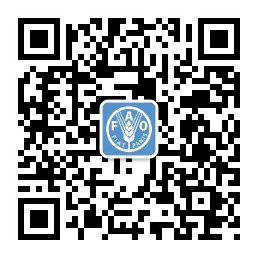Focus on AGROVOC multilingual Thesaurus
.jpg)
AGROVOC SKOSMOS AND WEB SERVICE HAVE BEEN MOVED
In June 2018, AGROVOC SKOSMOS and AGROVOC Web services have been moved to a new server. Please update your bookmarks as follows:
- SKOSMOS: Searching and browsing AGROVOC concepts/terms
- Page on AGROVOC releases
- New AGROVOC Webservices. (Note: the AGROVOC web services on the old server are temporarily redirected to the new Web services)
- AGROVOC VOID: a vocabulary for 'Describing Linked Datasets'
- AGROVOC termcodes
- All upcoming updates will be reflected on the AGROVOC homepage
The development of the AGROVOC concept scheme is a collaborative effort, supported by the AGROVOC Editors Community and the ART team at the Università degli Studi di Roma, Tor Vergata. AGROVOC will soon move from VocBench 2.4 to VocBench 3, which will enhance the performance of AGROVOC's knowledge base editing and expansion.
If you or your institution would like to contribute to a particular language or topic, or translate AGROVOC into a new language, please contact us at [email protected].
If you would like to be updated on specific news linked to the FAO AGROVOC multilingual thesaurus, you are invited to join AGROVOC DGroup.
ADDING SEMANTIC VALUE TO YOUR DATA
With the paradigm of Linked Open Data (LOD), it has become a general strategy to free data from silos with ownership restricted access. The easiest way to make digital libraries resources available and connected is to establish automatic indexing and links between datasets, with the help of open standard vocabularies representing data/metadata elements (e.g., Meaningful Bibliographic Metadata, M2B) with authentic, long-term values. "The repository should provide evidence to show that it operates a data and metadata management system suitable for ensuring integrity and authenticity during the process of ingest, archival storage, and data access." (Core Trustworthy Data Repositories Requirements for 2017–2019, CoreTrustSeal)
Considering that "Almost all metadata standards require or recommend the use of controlled vocabularies for some elements" (Metadata Value Space), the digital library environment needs appropriate encoding policies that can be used to improve decision-making in the choice of data standards/value vocabularies, also in order to achieve LOD-readiness and quality of the bibliographic data. The approach of employing well-accepted metadata element sets and value vocabularies has already shown great benefits and potential in terms of resource discovery, data reuse, data sharing, and the creation of new content based on LOD.
The LOD-enabled bibliographic data (LODE-BD) FAO Recommendations offer guidance on how to produce quality bibliographic data and records (metadata on document-like objects and beyond) representing a wide variety of published contents such as articles, monographs, theses, conference papers, presentation materials, research reports, learning objects, etc. LOD-ready structured bibliographical data help improve the quality of metadata and semantic interoperability of datasets populating open (bibliographic data) repositories and LOD Cloud.
More and more controlled vocabularies are published as Linked Data where concepts are represented by non-literal values (i.e. an identifier and/or a http URI). For example, each AGROVOC concept has its unique http URI. LODE-BD recommends using these URIs instead of the literal forms (i.e., the labels) as values when considering moving towards publishing your data as Linked Data (LODE-BD, 3.5.1. Subject). AGROVOC concepts/terms have been widely used, for example, to index and to link bibliographical data in the FAO - AGRIS (International Information System for the Agricultural Science and Technology) open repository, and have been highly recommended to extend common semantics for linking diverse information in agriculture and related sectors.
"The need for structure and control within library systems came at the same time as a need to share and collaborate. Rather than each developing their own knowledge organization systems, libraries sought to share and re-use existing ones: classifications like UDC, thesauri like AGROVOC, subject heading lists like LCSH or RAMEAU are used in entire networks of libraries." (Knowledge Graphs in the Libraries and Digital Humanities Domain). The NISO TR-06-2017: Issues in Vocabulary Management recommends to use AGROVOC in local applications, as well as a hub from which to access many other vocabularies available on the Web.
AGROVOC CONCEPT SCHEME
LODE-BD FAO Recommendations (3.5.1 Subject) leverage the operational basis for Semantic Web services through the knowledge patterns encoded in the AGROVOC and in other Value Data Vocabularies/Standards accessible from the VEST / AgroPortal platform. These open value standards can be re-used by different software in the context of different mashup pages combining a variety of LOD sources.
Apart from VEST registry, AGROVOC is also indexed in FAIRsharing, AgroPortal, BARTOC, Dublin Core KOS Relation Vocabulary, Research Vocabularies Australia, Linguistic Linked Open Data cloud service, - just to name a few."The use of AGROVOC has also expanded considerably to the point where it is now a model for the organization of explicit knowledge as well as a resource used to add multilingual search functionality." (FAO Relationships between Use Cases)
The latest release of the AGROVOC thesaurus contains up to 35,500 concepts and 671,200 terms (as of May-June 2018) covering all areas of interest of the Food and Agriculture Organization of the United Nations (FAO), including food, nutrition, agriculture, fisheries, forestry, environment etc. AGROVOC concept scheme - available in 29 languages - is published by FAO and edited by a community of international experts.
Adopting Semantic Web and LOD best practices and technologies, AGROVOC concepts/terms have been assigned URIs (non-literal values), organized into a SKOS-XL concept scheme, and served both as LOD, and via SPARQL endpoint. AGROVOC is aligned with 18 other multilingual knowledge organization systems reflecting agriculture and related sectorial knowledge.
To improve the visibility and discoverability of AGROVOC concepts/terms as well as resources described by them, different communities have developed added value services; see, for example: AGROVOC plugin for Open Journal Systems, the Classification Server of PHAIDRA- Digital Asset Management System of the University of Vienna (check also: Connecting Phaidra to the Classification Server in GitHub, in particular Requirements of the Classification server), the CGIAR Big Data Platform (and other services relying on progressively expanded AGROVOC semantic knowledge base).

